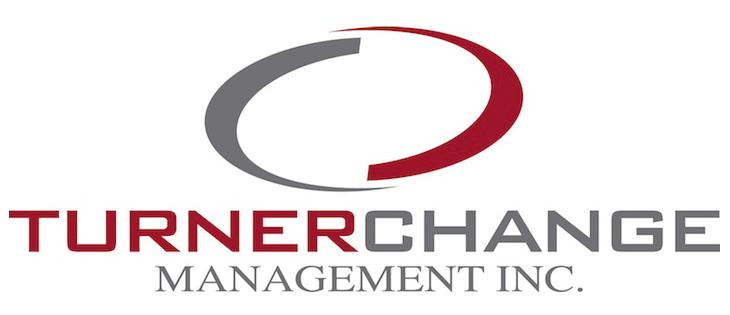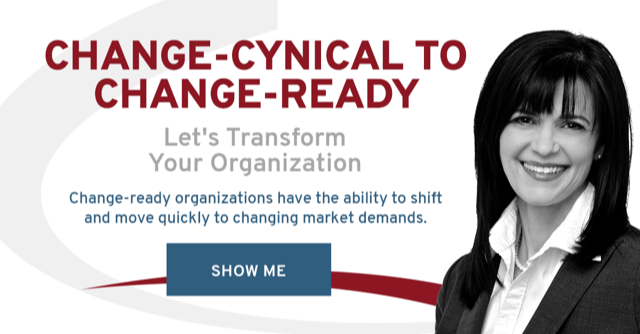Employee involvement during organizational change is not optional
It still surprises me when I hear a leader say, “the change is too large to involve everyone;” or, “we don’t have time to involve everyone.” It surprises me because it is said as if employee involvement is an option. Your employees, the people you expect to adopt new behaviours or activities for the organization to achieve the intended change, are by default involved. To assume otherwise would be like assuming you could get fit, if I exercise. Your approach to change and the decisions you make about involvement will determine whether your employees’ focus is on adopting the new environment, or on protecting and maintaining the current state.
Change is a choice
Involvement doesn’t mean, every employee has input into every decision. That would not be fair to your employees, or in the best interest of your organization. However change, even organizational change is a choice. Every person affected by the change, will make decisions that influence the success and sustainability of your change. To enable sustainable change you need to recognize the type of decisions made during change, where they are made within your organization, and create a structure of involvement that facilitates decision-making at the right level, by the right people, at the right time.
Three types of organizational change decisions
There are typically three types of decisions needed when facilitating organizational change.
- Strategic – These are the decisions related to your organization’s direction. They can include decisions about direction, timing and the identification of the changes needed to achieve your strategic goals, and objectives. Strategic decisions may also include the amount and scope of change for the organization.
- Planning – These decisions usually follow strategic decisions. They include the decisions related to the planning, and design of the activities, type of support, and resources needed to implement the change.
- Adoption – These decisions define how the change will actually manifest in your organization. Adoption decisions are internal and personal. Every change recipient will make an adoption decision (choice) about how and to what extent he will engage in the behaviours, activities, and processes of the new environment.
Leaders I talk with about the three types of decisions during change, are very comfortable with the strategic and planning decisions. However, adoption decisions are different. Many leaders are initially uncomfortable with the idea that it is the change recipients’ who ultimately decide the success and sustainability of an organizational change they have decided to implement.
Leaders are also uncomfortable with adoption decisions because; you can’t mandate adoption. When it comes to adoption the timing, nature, and type of involvement matters. The decisions you make or don’t make, about when and how to involve the change recipients determines whether it becomes your greatest asset or another risk to be managed.
When it comes to strategy and planning decisions most organizations have a hierarchy and processes that define who should be involved, the decisions needed and how the decisions will be made. Adoption decisions are different, and most organizational structures don’t have built-in mechanisms to ensure change recipient involvement. Therefore you will need to make a strategic decision that involvement is necessary, and then create the structures to ensure you get the type of involvement needed for adoption of the changes you want to make.
Creating change ambassadors
On an episode of the CBC radio program Under the Influence, the host Terry O’Reily highlighted Cosco, one of six companies that had grown to a multi-billion dollar organization without any paid advertising. It stood out for me because this big box warehouse store has a strategy to ensure every employee becomes an ambassador for the company.
Your organizational change efforts are similar, unless the change recipients become ambassadors for the change and make the decision to adopt the new behaviours, your change cannot succeed. Think about that new process you would like implemented in your production department – it is the people that will use the process everyday that will ultimately decide its success. Yet they often have little or no say in the redesign of the process.
Developing and enabling the structures needed to actively involve the change recipients is not always easy, and it may require some creative thinking if you have a very large workforce, or your employees are spread out geographically. Contrary to what many leaders believe, actively involving your employees in the change can save time: the time needed to manage “resistance’, to rework or “tweak” the change so it looks like the old and the time needed to enforce compliance after the change has been implemented. Stephen Covey stated, “no involvement, no commitment”.
P.S. If you would like to learn more about how to create the structure needed to prevent resistance to change and achieve greater success, contact us at info@thinktransition.com
Dr. Dawn-Marie Turner is an international researcher, speaker, author, and certified management consultant (CMC). She is president of Turner Change Management, a company that specializes in helping leaders navigate the complexities of organizational change. She has a doctorate in applied management and decision science from Walden University.





